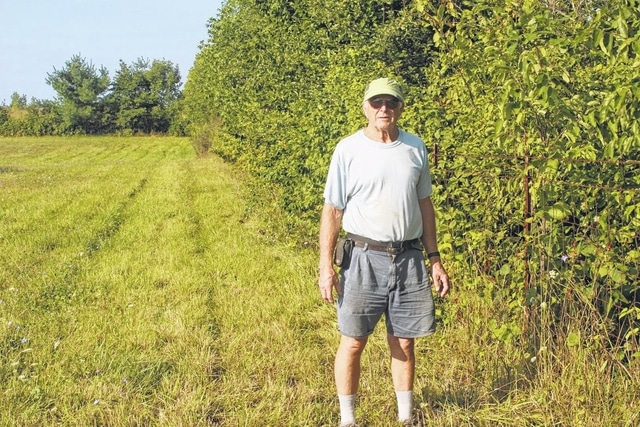
What are farmers doing to help with conservation? More than you think. Each week we are going to highlight some of the conservation practices that are being used in Fayette County.
The Shaws maintain their fence rows and windbreaks by choice and it is an act of understanding the importance of a good conservation practice. Tom Shaw 15 years ago decided to add windbreaks to his field. He added a diversity of hardwoods and evergreens like wild cherry, crabapple, oak, white pine, persimmon, blue spruce, ash, and butternut in double rows. The windbreaks helps protect his livestock and gives them shade as well as a wind barrier in cold weather. This reduces the energy requirement that cattle need to maintain their body temperature.
There are many other practical benefits to having windbreaks between fields. One of the most obvious is reducing soil loss from wind. This is evident in the winter when the snow turns brown from soil particles being blown around. Field windbreaks also protect crops from wind damage and may increase crop yields by 10 percent, especially in dry years.
The environmental benefits of windbreaks include protecting water and air quality by providing a barrier against airborne soil, chemical drift, odors and dust. Trees are also important in capturing carbon. The Shaws have also seen a diversity of wildlife. They have also added a wetland to their property. The tree corridor and the wetland provide habitat for bob white quail, bobolinks, foxes, pheasants, and turtles, to list a few of the species seen on the farm.
Fence rows and windbreaks dotted many farms in the past but have diminished over time as fields have gotten bigger. All farmers and landowners are managers of their land base. When you look at managing your land for the future and what you want your landscape to look like beyond the present, consideration for economics and environmental benefits can coincide. Adding diversity helps everyone. Tom and Mary Lou Shaw have added conservation practices that are both economically and environmentally beneficial.


